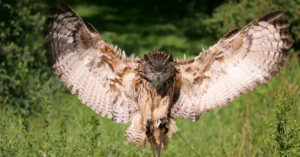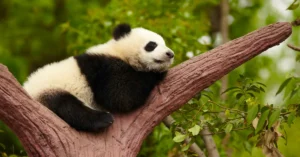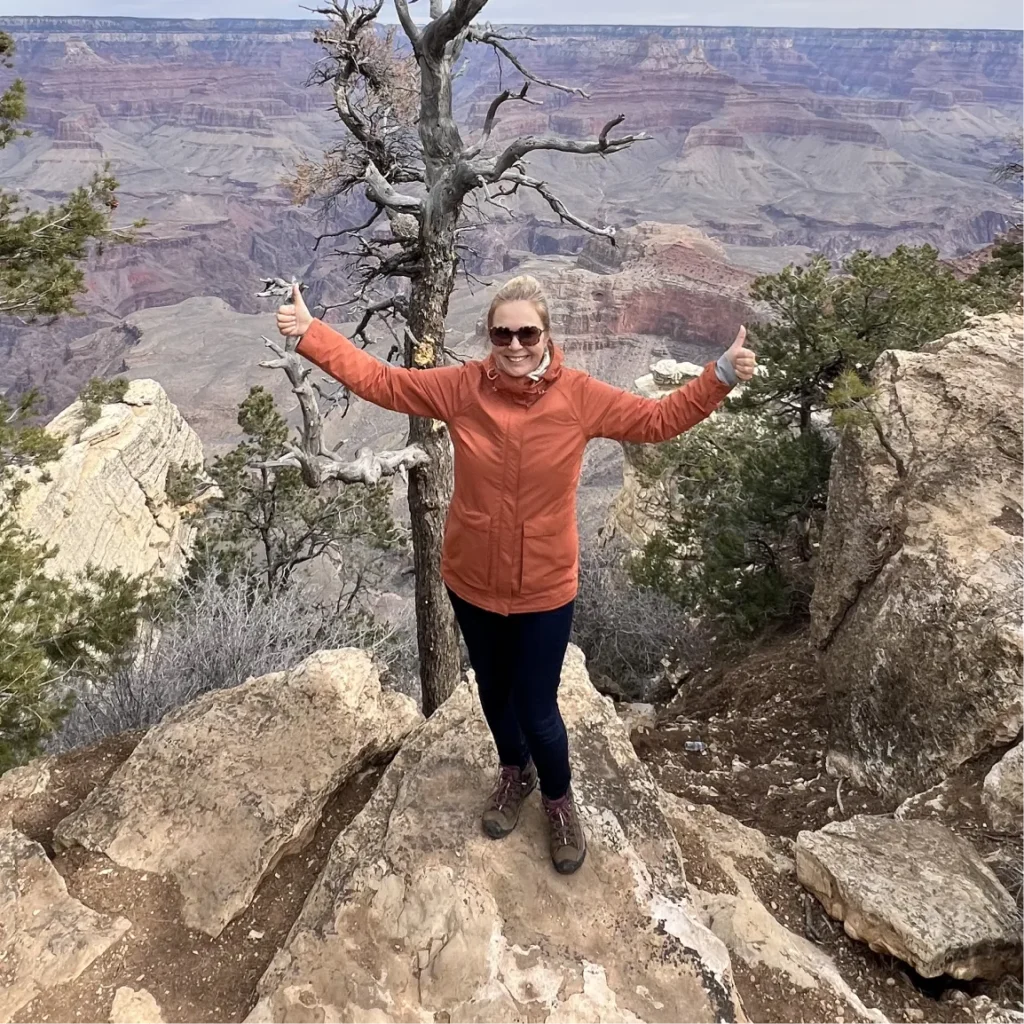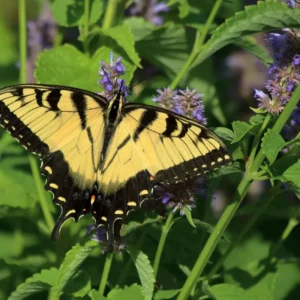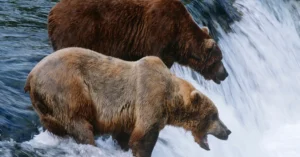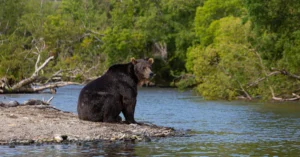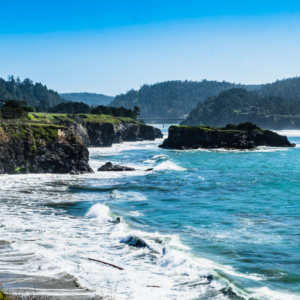Seeing wildlife in their natural homes is amazing. Each U.S. state has special places for this. These spots let you see animals in the wild.
Whether you love birds, mammals, or reptiles, there’s something for everyone. This list will guide you to the best regional wildlife watching spots in each U.S. state.
Wildlife watching is great for all ages. It helps us connect with nature. Plus, it’s a fun way to learn about animals and their habitats.
This activity also supports conservation. By visiting these spots, you help protect wildlife. Let’s look at fifty top spots across different states. Remember, always respect the animals and their homes. Enjoy your wildlife adventures!
Underrated Wildlife Habitat Capturing States In The USA
Explore America’s best wildlife states for incredible animal encounters. From Alaska’s wild landscapes to Florida’s diverse habitats, discover unforgettable wildlife experiences across the USA.
Arizona Wildlife Watching Spots
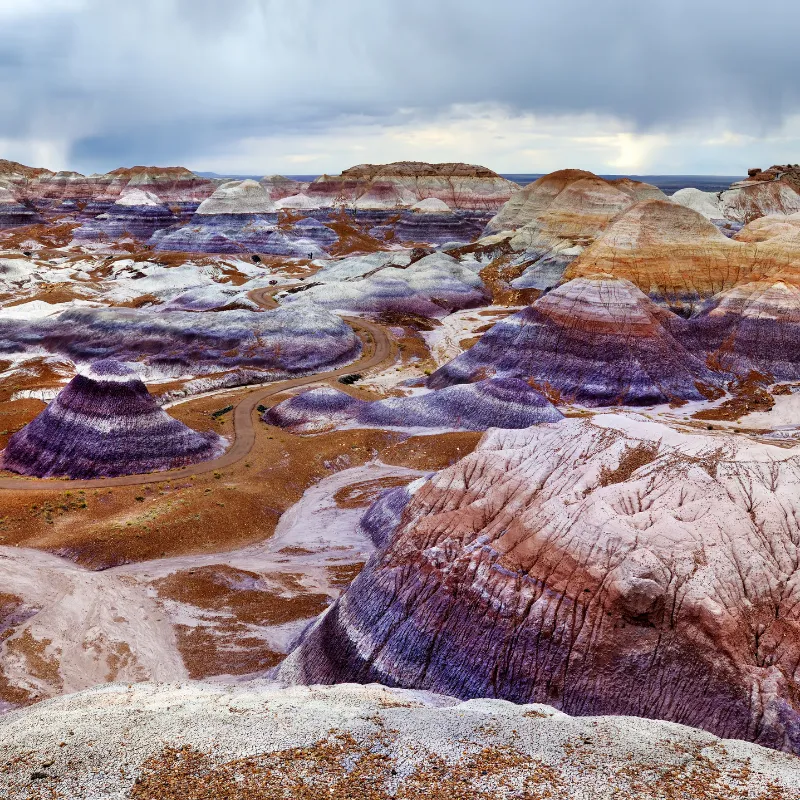
1. Grand Canyon National Park
The Grand Canyon is famous for its vast landscapes and deep canyons. It’s a haven for wildlife lovers. You can spot California condors, mule deer, and bighorn sheep. The diverse habitats range from riverbanks to forested rims.
- Wildlife Species: California condors, mule deer, bighorn sheep
- Best Time To Visit: Spring and fall for cooler temperatures and active wildlife.
2. Saguaro National Park
Saguaro National Park, home to the giant saguaro cactus, offers a unique desert environment. Look for Gila woodpeckers, desert tortoises, and javelinas. The park’s varied terrain includes cactus forests and rugged mountains.
- Wildlife Species: Gila woodpeckers, desert tortoises, javelinas
- Best Time To Visit: Late winter to early spring for mild weather.
3. Petrified Forest National Park
Petrified Forest National Park showcases ancient, fossilized trees. Wildlife includes pronghorns, bobcats, and various lizards. The colorful badlands are ideal for spotting these creatures.
- Wildlife Species: Pronghorns, bobcats, various lizards
- Best Time To Visit: Spring and fall for pleasant temperatures and active wildlife.
4. Organ Pipe Cactus National Monument
Organ Pipe Cactus National Monument is known for its namesake cactus and diverse desert wildlife. Spotting coyotes, jackrabbits, and elf owls is common here. The monument’s rugged terrain offers stunning views and wildlife sightings.
- Wildlife Species: Coyotes, jackrabbits, elf owls
- Best Time To Visit: March to May for mild weather and blooming desert plants.
5. Havasu Canyon
Havasu Canyon, part of the Grand Canyon, is famous for its blue-green waterfalls and lush vegetation. Look for ringtail cats, American dippers, and canyon wrens. The cool waters and shaded areas attract many animals.
- Wildlife Species: Ringtail cats, American dippers, canyon wrens
- Best Time To Visit: Spring and fall for ideal weather and water flow.
6. Kartchner Caverns State Park
Kartchner Caverns State Park features stunning limestone caves and a variety of wildlife. Bats, cave crickets, and Gila monsters are common here. The park’s desert surroundings also host diverse species.
- Wildlife Species: Bats, cave crickets, Gila monsters
- Best Time To Visit: Fall and winter for cooler temperatures and fewer crowds.
7. Tonto National Forest
Tonto National Forest offers a mix of desert and mountain habitats. You can see elk, black bears, and bald eagles. The diverse landscapes range from saguaro-filled deserts to pine-covered mountains.
- Wildlife Species: Elk, black bears, bald eagles
- Best Time To Visit: Spring and fall for moderate weather and active wildlife.
8. Coconino National Forest
Coconino National Forest is known for its red rock formations and dense forests. Look for Abert’s squirrels, mule deer, and great horned owls. The forest’s varied elevations support a wide range of species.
- Wildlife Species: Abert’s squirrels, mule deer, great horned owls
- Best Time To Visit: Spring and early summer for blooming plants and active wildlife.
Florida Wildlife Watching Spots
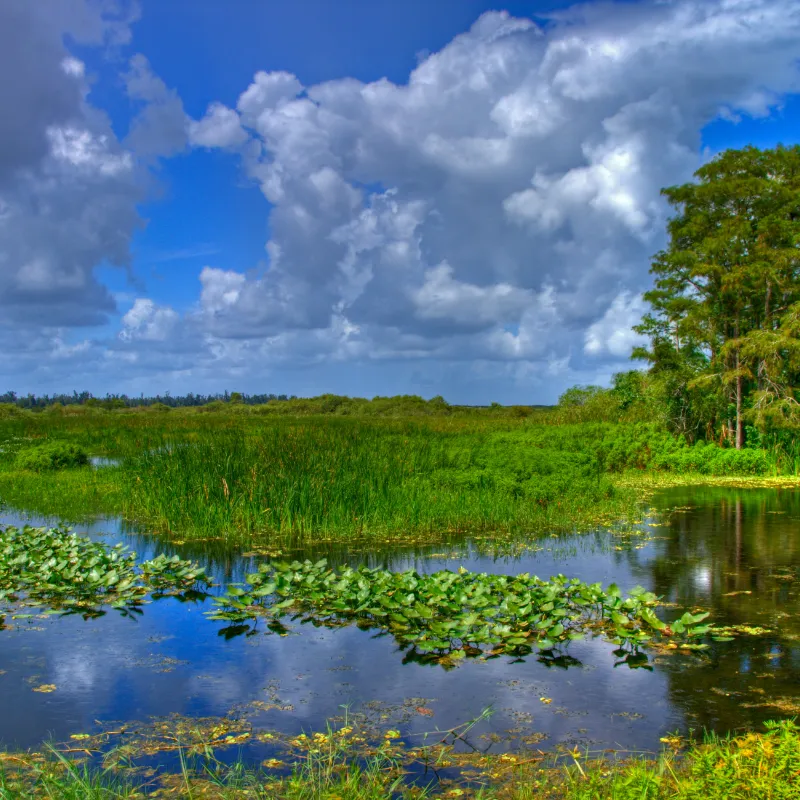
1. Everglades National Park
Everglades National Park is known for its vast wetlands and diverse wildlife. Spot American alligators, manatees, and roseate spoonbills. The park’s unique ecosystem supports many species.
- Wildlife Species: American alligators, manatees, roseate spoonbills
- Best Time To Visit: Winter for cooler weather and fewer mosquitoes.
2. Biscayne National Park
Biscayne National Park offers stunning coral reefs and marine life. Look for dolphins, sea turtles, and tropical fish. The park’s underwater habitats are teeming with diverse species.
- Wildlife Species: Dolphins, sea turtles, tropical fish
- Best Time To Visit: Spring and summer for clear water and active marine life.
3. Dry Tortugas National Park
Dry Tortugas National Park features crystal-clear waters and abundant seabirds. Spot sooty terns, frigatebirds, and nurse sharks. The park’s remote islands provide pristine wildlife habitats.
- Wildlife Species: Sooty terns, frigatebirds, nurse sharks
- Best Time To Visit: Late spring to early summer for bird nesting season and calm seas.
4. Big Cypress National Preserve
Big Cypress National Preserve is known for its swamps and rich biodiversity. Look for Florida panthers, white-tailed deer, and various wading birds. The preserve’s wetlands support a variety of wildlife.
- Wildlife Species: Florida panthers, white-tailed deer, various wading birds
- Best Time To Visit: Winter for cooler temperatures and active wildlife.
5. Ocala National Forest
Ocala National Forest offers diverse habitats, from sandhills to springs. Spot black bears, bald eagles, and river otters. The forest’s varied landscapes attract many species.
- Wildlife Species: Black bears, bald eagles, river otters
- Best Time To Visit: Spring and fall for mild weather and active wildlife.
6. St. Marks National Wildlife Refuge
St. Marks National Wildlife Refuge is famous for its migratory birds and coastal habitats. Look for whooping cranes, alligators, and red wolves. The refuge’s wetlands and forests support diverse species.
- Wildlife Species: Whooping cranes, alligators, red wolves
- Best Time To Visit: Winter for bird migrations and cooler weather.
7. Canaveral National Seashore
Canaveral National Seashore features pristine beaches and rich marine life. Spot loggerhead sea turtles, West Indian manatees, and shorebirds. The seashore’s coastal habitats provide important nesting sites.
- Wildlife Species: Loggerhead sea turtles, West Indian manatees, shorebirds
- Best Time To Visit: Late spring and early summer for turtle nesting season.
Texas Wildlife Watching Spots
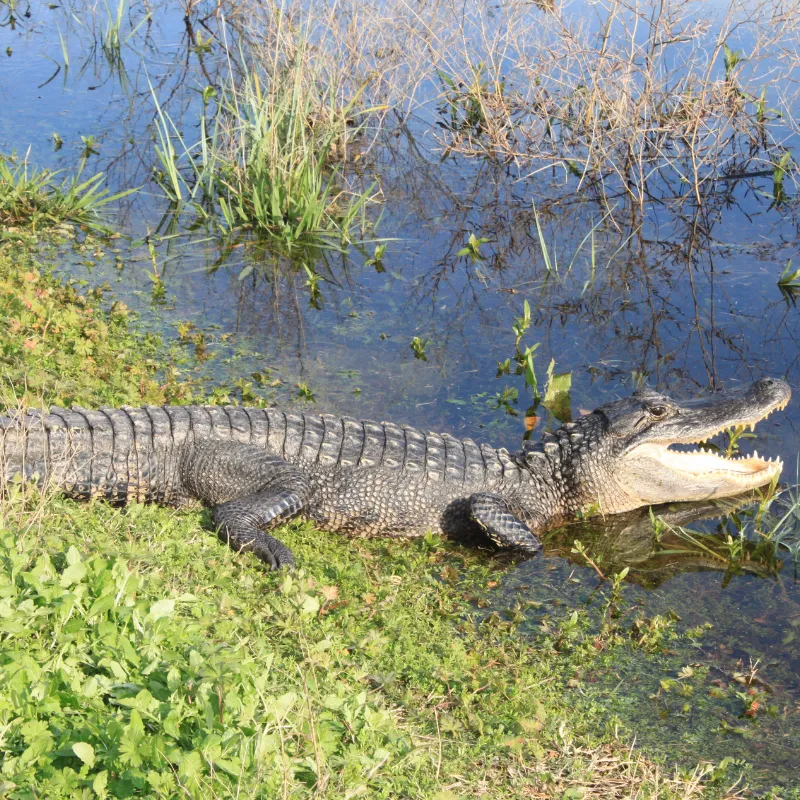
1. Big Bend National Park
Big Bend National Park offers diverse landscapes, from desert to river canyons. Wildlife enthusiasts can see roadrunners, javelinas, and black bears. The park’s varied ecosystems provide habitats for many species.
- Wildlife Species: Roadrunners, javelinas, black bears
- Best Time To Visit: Spring and fall for cooler temperatures and active wildlife.
2. Guadalupe Mountains National Park
Guadalupe Mountains National Park is known for its rugged mountains and diverse flora. Look for mule deer, elk, and mountain lions. The park’s high elevations offer a range of habitats.
- Wildlife Species: Mule deer, elk, mountain lions
- Best Time To Visit: Fall for comfortable weather and vibrant foliage.
3. Padre Island National Seashore
Padre Island National Seashore protects a long stretch of barrier island. Visitors can spot Kemp’s ridley sea turtles, migratory birds, and ghost crabs. The coastal habitats support a variety of wildlife.
- Wildlife Species: Kemp’s ridley sea turtles, migratory birds, ghost crabs
- Best Time To Visit: Late spring and early summer for turtle nesting season.
4. Brazos Bend State Park
Brazos Bend State Park is famous for its wetlands and woodlands. Look for American alligators, white-tailed deer, and various bird species. The park’s diverse environments attract many animals.
- Wildlife Species: American alligators, white-tailed deer, various bird species
- Best Time To Visit: Spring and fall for mild temperatures and active wildlife.
5. Enchanted Rock State Natural Area
Enchanted Rock State Natural Area features a massive pink granite dome. Wildlife sightings include rock squirrels, armadillos, and golden-cheeked warblers. The park’s unique geology provides various habitats.
- Wildlife Species: Rock squirrels, armadillos, golden-cheeked warblers
- Best Time To Visit: Spring for wildflower blooms and pleasant weather.
6. Palo Duro Canyon State Park
Palo Duro Canyon State Park, known as the “Grand Canyon of Texas,” offers stunning views and rich wildlife. Look for bobcats, wild turkeys, and Texas horned lizards. The canyon’s ecosystems support diverse species.
- Wildlife Species: Bobcats, wild turkeys, Texas horned lizards
- Best Time To Visit: Late spring and early fall for comfortable temperatures and active wildlife.
7. Big Thicket National Preserve
Big Thicket National Preserve is known for its biodiversity, ranging from pine forests to wetlands. Spotting alligators, river otters, and swallow-tailed kites is common. The preserve’s varied habitats attract many species.
- Wildlife Species: Alligators, river otters, swallow-tailed kites
- Best Time To Visit: Spring and fall for moderate weather and active wildlife.
8. Davy Crockett National Forest
Davy Crockett National Forest offers dense woodlands and abundant wildlife. Look for white-tailed deer, red-cockaded woodpeckers, and gray foxes. The forest’s mixed hardwood and pine areas provide diverse habitats.
- Wildlife Species: White-tailed deer, red-cockaded woodpeckers, gray foxes
- Best Time To Visit: Spring and early summer for blooming flowers and active wildlife.
Montana Wildlife Watching Spots
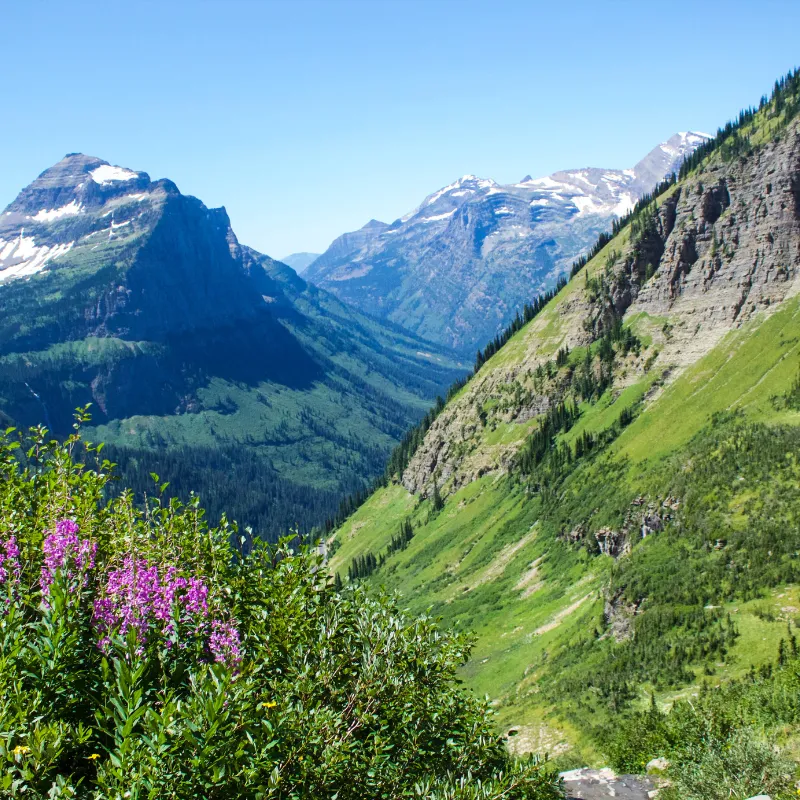
1. Glacier National Park
Glacier National Park is renowned for its rugged mountains and pristine lakes. Wildlife includes grizzly bears, mountain goats, and bald eagles. The park’s diverse habitats range from dense forests to alpine meadows.
- Wildlife Species: Grizzly bears, mountain goats, bald eagles
- Best Time To Visit: Summer for warm weather and active wildlife.
2. Yellowstone National Park
Yellowstone National Park, shared with Wyoming, is famous for geothermal features and abundant wildlife. Spot bison, elk, and wolves in their natural habitats. The park’s varied landscapes offer excellent wildlife viewing opportunities.
- Wildlife Species: Bison, elk, wolves
- Best Time To Visit: Late spring and early fall for mild temperatures and fewer crowds.
3. Flathead National Forest
Flathead National Forest offers diverse ecosystems, from forests to rivers. Look for moose, black bears, and osprey. The forest’s varied terrain provides homes for many species.
- Wildlife Species: Moose, black bears, osprey
- Best Time To Visit: Summer and early fall for comfortable weather and active wildlife.
4. Bighorn Canyon National Recreation Area
Bighorn Canyon National Recreation Area features stunning canyons and diverse wildlife. Spot bighorn sheep, wild horses, and golden eagles. The canyon’s unique landscape attracts a variety of animals.
- Wildlife Species: Bighorn sheep, wild horses, golden eagles
- Best Time To Visit: Spring and fall for cooler temperatures and active wildlife.
5. Lewis and Clark Caverns State Park
Lewis and Clark Caverns State Park is known for its impressive limestone caves and surface wildlife. Look for bats, mule deer, and various bird species. The park’s mix of caves and forests supports diverse species.
- Wildlife Species: Bats, mule deer, various bird species
- Best Time To Visit: Spring and summer for cave tours and mild weather.
6. Grant-Kohrs Ranch National Historic Site
Grant-Kohrs Ranch National Historic Site offers a glimpse into Montana’s ranching history. Wildlife includes white-tailed deer, pronghorns, and prairie dogs. The open grasslands and ranch areas attract many animals.
- Wildlife Species: White-tailed deer, pronghorns, prairie dogs
- Best Time To Visit: Late spring and early fall for pleasant weather and active wildlife.
7. Little Bighorn Battlefield National Monument
Little Bighorn Battlefield National Monument combines history with wildlife viewing. Look for pronghorns, coyotes, and various bird species. The monument’s rolling plains provide habitats for many animals.
- Wildlife Species: Pronghorns, coyotes, various bird species
- Best Time To Visit: Spring and fall for moderate temperatures and active wildlife.
8. Beartooth Wilderness
Beartooth Wilderness offers rugged landscapes and rich biodiversity. Spot mountain goats, moose, and pikas. The wilderness area’s high elevations and varied habitats support diverse species.
- Wildlife Species: Mountain goats, moose, pikas
- Best Time To Visit: Summer for access to high-altitude trails and active wildlife.
9. Helena National Forest
Helena National Forest provides dense forests and abundant wildlife. Look for elk, black bears, and bald eagles. The forest’s mixed habitats range from pine forests to river valleys.
- Wildlife Species: Elk, black bears, bald eagles
- Best Time To Visit: Spring and fall for comfortable weather and active wildlife.
10. Waterton-Glacier International Peace Park
Waterton-Glacier International Peace Park, shared with Canada, offers stunning landscapes and diverse wildlife. Spot grizzly bears, bighorn sheep, and harlequin ducks. The park’s cross-border habitats attract many species.
- Wildlife Species: Grizzly bears, bighorn sheep, harlequin ducks
- Best Time To Visit: Summer for warm weather and abundant wildlife sightings.
Alaska Wildlife Watching Spots
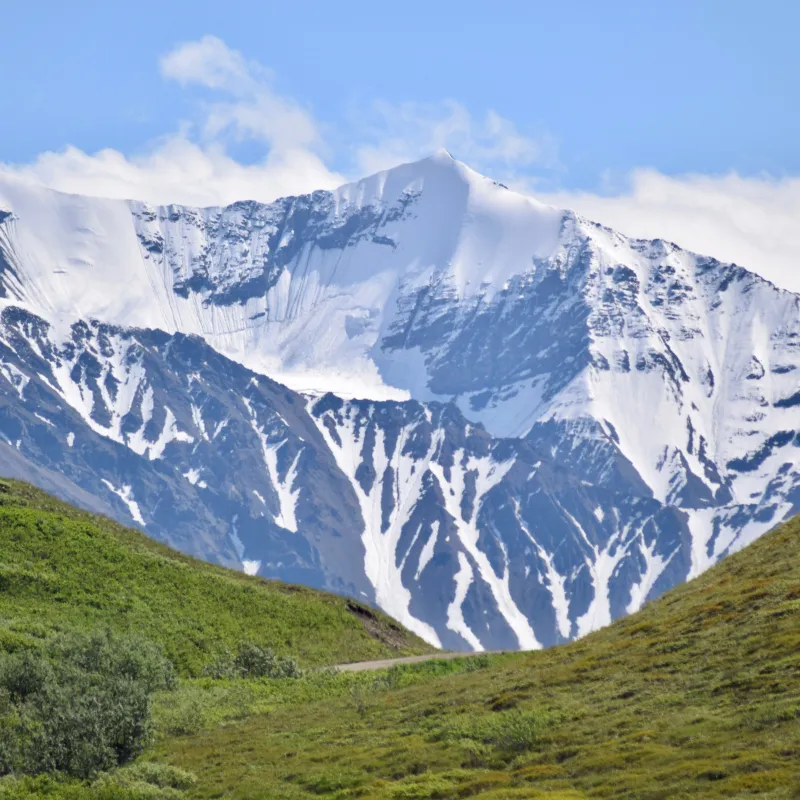
1. Denali National Park and Preserve
Denali National Park and Preserve is home to North America’s highest peak and diverse wildlife. Spot grizzly bears, caribou, and Dall sheep. The park’s vast tundra and forested areas provide rich habitats.
- Wildlife Species: Grizzly bears, caribou, Dall sheep
- Best Time To Visit: Late spring to early fall for mild weather and active wildlife.
2. Kenai Fjords National Park
Kenai Fjords National Park features dramatic glaciers and rich marine life. Look for humpback whales, sea otters, and puffins. The park’s coastal and glacial environments attract various species.
- Wildlife Species: Humpback whales, sea otters, puffins
- Best Time To Visit: Summer for pleasant weather and peak wildlife activity.
3. Glacier Bay National Park and Preserve
Glacier Bay National Park and Preserve is known for its stunning glaciers and diverse wildlife. Spot orcas, harbor seals, and mountain goats. The park’s fjords and forests support a variety of animals.
- Wildlife Species: Orcas, harbor seals, mountain goats
- Best Time To Visit: Late spring to early fall for accessible trails and active wildlife.
4. Katmai National Park and Preserve
Katmai National Park and Preserve is famous for its brown bears and volcanic landscapes. Visitors can watch bears catching salmon in Brooks River. The park’s rivers and forests are prime bear habitats.
- Wildlife Species: Brown bears, salmon, various bird species
- Best Time To Visit: July to September for prime bear viewing during salmon runs.
5. Wrangell-St. Elias National Park and Preserve
Wrangell-St. Elias National Park and Preserve, the largest U.S. national park, offers vast wilderness and diverse wildlife. Spot moose, wolves, and black bears. The park’s varied landscapes range from glaciers to forests.
- Wildlife Species: Moose, wolves, black bears
- Best Time To Visit: Summer for warmer temperatures and accessible terrain.
6. Lake Clark National Park and Preserve
Lake Clark National Park and Preserve features volcanoes, glaciers, and rich wildlife. Look for brown bears, red foxes, and sockeye salmon. The park’s diverse habitats include lakes, rivers, and forests.
- Wildlife Species: Brown bears, red foxes, sockeye salmon
- Best Time To Visit: Late spring to early fall for bear viewing and salmon runs.
7. Kodiak National Wildlife Refuge
Kodiak National Wildlife Refuge is known for its large Kodiak brown bears. Other wildlife includes Sitka black-tailed deer and bald eagles. The refuge’s varied habitats range from alpine meadows to wetlands.
- Wildlife Species: Kodiak brown bears, Sitka black-tailed deer, bald eagles
- Best Time To Visit: Summer for optimal bear viewing and mild weather.
8. Arctic National Wildlife Refuge
Arctic National Wildlife Refuge offers vast, untouched wilderness and unique wildlife. Spot caribou, polar bears, and snowy owls. The refuge’s tundra and coastal plains are crucial habitats for many species.
- Wildlife Species: Caribou, polar bears, snowy owls
- Best Time To Visit: Summer for 24-hour daylight and active wildlife.
Washington Wildlife Watching Spots
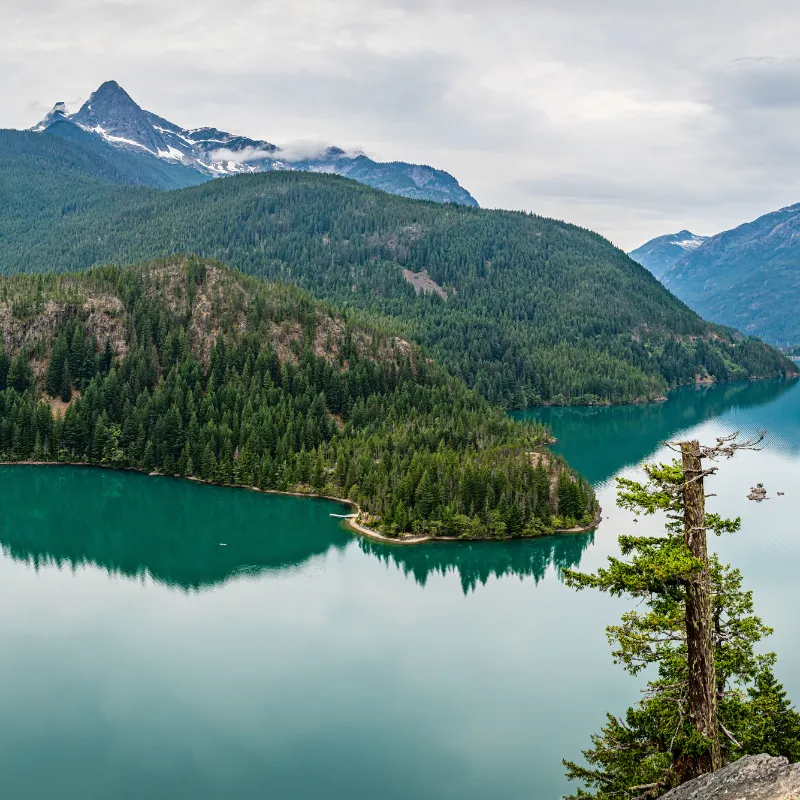
1. Olympic National Park
Olympic National Park boasts diverse ecosystems, from rainforests to coastal beaches. Wildlife sightings include Roosevelt elk, black bears, and bald eagles. The park’s varied habitats attract numerous species.
- Wildlife Species: Roosevelt elk, black bears, bald eagles
- Best Time To Visit: Spring and summer for mild weather and active wildlife.
2. Mount Rainier National Park
Mount Rainier National Park features lush forests and alpine meadows. Look for mountain goats, black-tailed deer, and marmots. The park’s high elevation and varied terrain support diverse wildlife.
- Wildlife Species: Mountain goats, black-tailed deer, marmots
- Best Time To Visit: Summer for accessible trails and blooming wildflowers.
3. North Cascades National Park
North Cascades National Park is known for its rugged mountains and rich biodiversity. Spot grizzly bears, gray wolves, and golden eagles. The park’s remote wilderness areas are prime habitats for wildlife.
- Wildlife Species: Grizzly bears, gray wolves, golden eagles
- Best Time To Visit: Late spring to early fall for accessible trails and active wildlife.
4. Mount St. Helens National Volcanic Monument
Mount St. Helens National Volcanic Monument showcases volcanic landscapes and recovering wildlife. Look for elk, black-tailed deer, and mountain bluebirds. The monument’s diverse habitats attract a variety of species.
- Wildlife Species: Elk, black-tailed deer, mountain bluebirds
- Best Time To Visit: Spring and early summer for wildflowers and active wildlife.
Colorado Wildlife Watching Spots

1. Rocky Mountain National Park
Rocky Mountain National Park offers stunning mountain landscapes and diverse wildlife. Spot elk, bighorn sheep, and moose. The park’s varied elevations provide habitats for many species.
- Wildlife Species: Elk, bighorn sheep, moose
- Best Time To Visit: Late spring to early fall for mild weather and active wildlife.
2. Great Sand Dunes National Park and Preserve
Great Sand Dunes National Park and Preserve features the tallest sand dunes in North America. Look for mule deer, kangaroo rats, and various bird species. The park’s unique environment supports diverse wildlife.
- Wildlife Species: Mule deer, kangaroo rats, various bird species
- Best Time To Visit: Spring and fall for comfortable temperatures and active wildlife.
3. Mesa Verde National Park
Mesa Verde National Park is known for its ancient cliff dwellings and rich wildlife. Spot mule deer, coyotes, and golden eagles. The park’s diverse habitats include forests and canyons.
- Wildlife Species: Mule deer, coyotes, golden eagles
- Best Time To Visit: Late spring to early fall for accessible trails and pleasant weather.
4. Black Canyon of the Gunnison National Park
Black Canyon of the Gunnison National Park features dramatic cliffs and deep canyons. Look for peregrine falcons, mule deer, and black bears. The park’s rugged terrain provides habitats for various species.
- Wildlife Species: Peregrine falcons, mule deer, black bears
- Best Time To Visit: Spring and fall for cooler temperatures and active wildlife.
5. Curecanti National Recreation Area
Curecanti National Recreation Area offers reservoirs and diverse wildlife. Spot bald eagles, river otters, and elk. The area’s mix of water and land habitats attracts many species.
- Wildlife Species: Bald eagles, river otters, elk
- Best Time To Visit: Summer for water activities and active wildlife.
Final Words
Exploring the top regional wildlife watching spots in each U.S. state is an incredible adventure.
Each park offers unique experiences and a chance to connect with nature. While visiting these places, remember to respect the wildlife and their habitats.
Keep a safe distance from animals, avoid feeding them, and stay on marked trails. Bring binoculars and a camera to capture your sightings without disturbing the animals.
Early mornings or late afternoons are often the best times for wildlife activity. Finally, patience is key; sometimes, the most rewarding sightings come to those who wait quietly. Enjoy your journey through America’s diverse and beautiful wildlife habitats!


